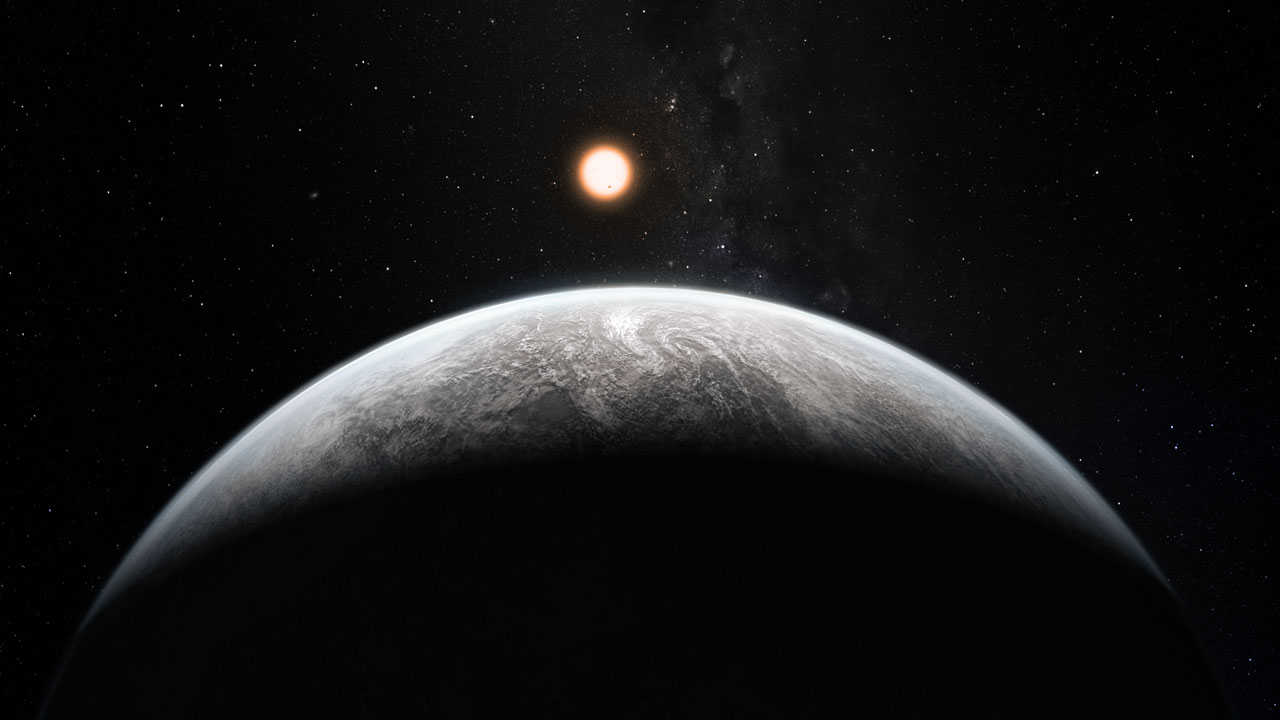Science News
50 New Exoplanets

Astronomers using ESO’s exoplanet hunter HARPS have today announced a rich haul of more than 50 new exoplanets, including 16 super-Earths, one of which orbits at the edge of the habitable zone of its star.
The new findings were presented this morning at a conference on Extreme Solar Systems in Wyoming, where 350 exoplanet experts are meeting this week.
The HARPS spectrograph on the 3.6-meter telescope at ESO’s La Silla Observatory in Chile is a very successful planet finder. The Bad Astronomer explains how it works in his Discover blog:
The instrument, called HARPS, for High Accuracy Radial velocity Planet Searcher, is a spectrograph. It takes light from distant objects and breaks it down into incredibly thin slices of wavelength, like a rainbow with a hundred thousand colors. A planet orbiting a star tugs on the star with this gravity, pulling it toward and away from us over the course of its orbit. This makes an incredibly small shift in the colors of the star, but well within the capability of HARPS to detect.
HARPS is focusing on 376 Sun-like stars, and in the past eight years it has discovered more than 150 exoplanets orbiting those stars. The team of astronomers working on HARPS has now improved the estimate of the likelihood a star like the Sun host low-mass planets (as opposed to gaseous giants). They find that about 40% of such stars have at least one planet less massive than Saturn.
Unlike the Kepler mission, HARPS can only measure the mass of a star, not its size.
The recent survey includes 16 super-Earths, planets with a mass between one and ten times that of Earth. No such planets exist in our Solar System, but they appear rather common around other stars. Discoveries of such planets in the habitable zones around their stars are very exciting because — if the planet were rocky and had water, like Earth — they could potentially harbor life.
Observations suggest that one of the newly discovered planets, HD 85512 b, has only 3.6 times the mass of the Earth and lies at the edge of its habitable zone — a narrow zone around a star in which water may be present in liquid form if conditions are right.
“This is the lowest-mass confirmed planet discovered by the radial velocity method that potentially lies in the habitable zone of its star, and the second low-mass planet discovered by HARPS inside the habitable zone,” says Lisa Kaltenegger, an expert on the habitability of exoplanets.
These results make astronomers confident that they will soon discover other small rocky habitable planets around stars similar to our Sun.
This ups the game for the fellow planet-hunting Kepler mission, the Nature Newsblog reports:
Using rival methods, astronomers are pushing ever closer to the goal of discovering another Earth. Kepler announced in February that it has five near-Earth-sized habitable-zone planet candidates that it is trying to confirm. The team is planning a press conference for Thursday.
HD 85512 b image: ESO/M. Kornmesser